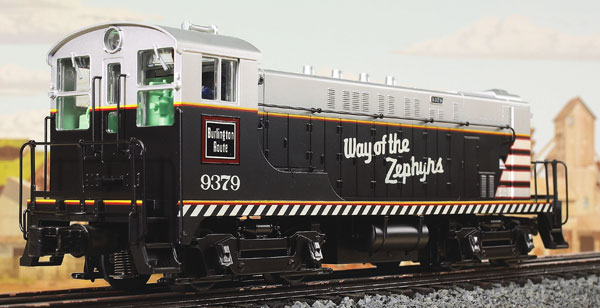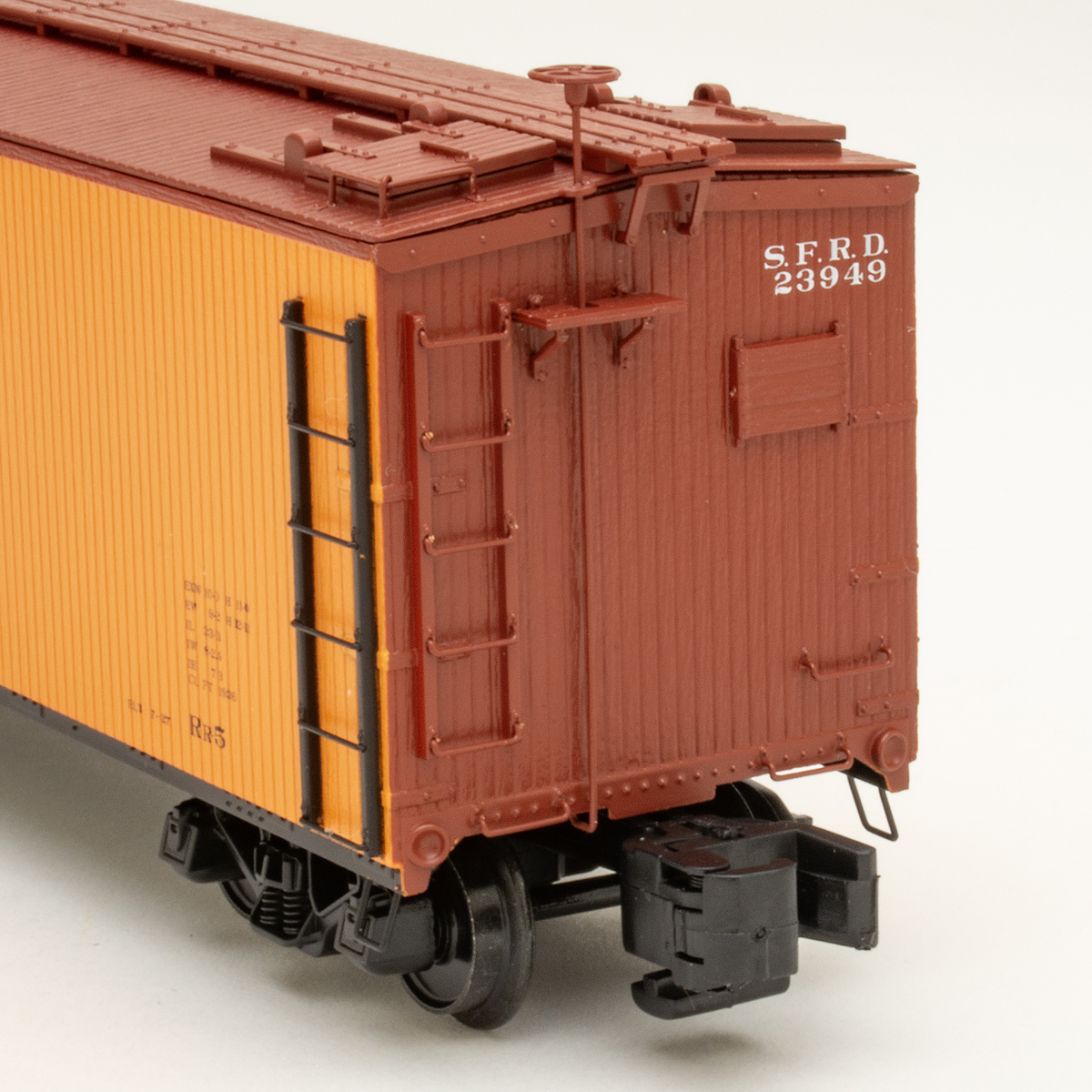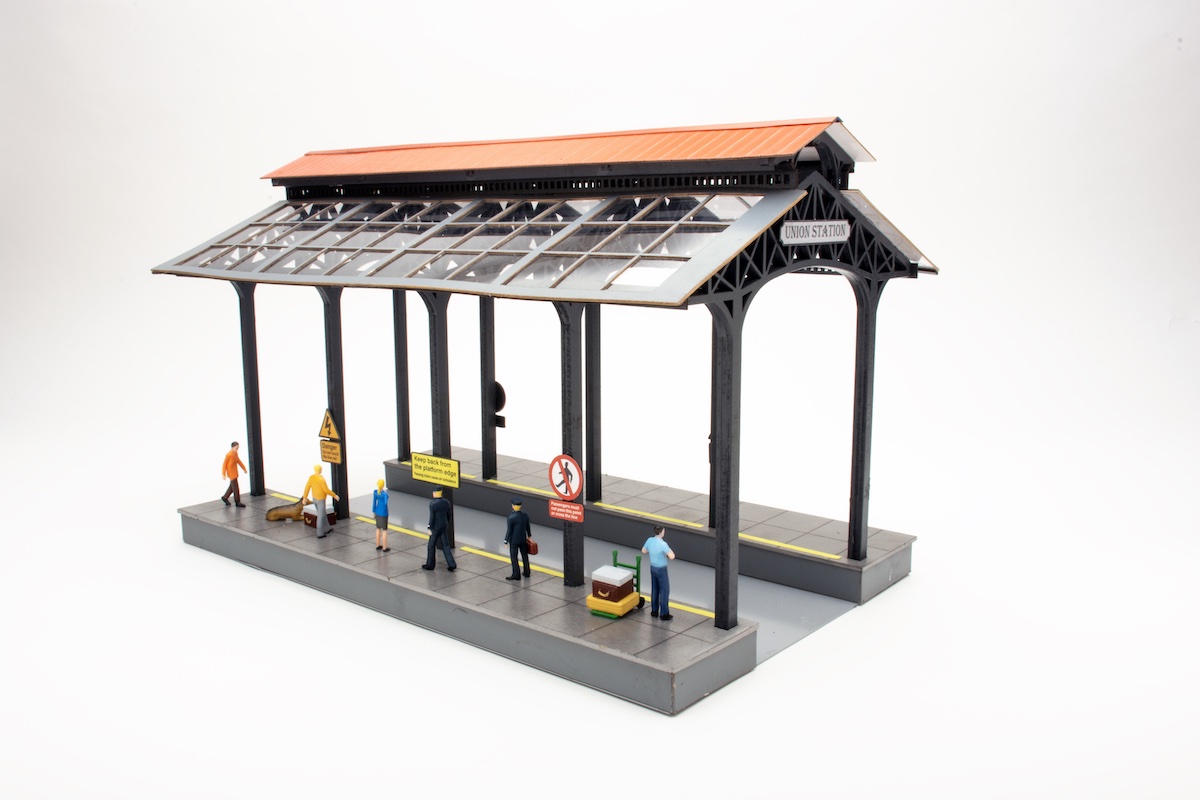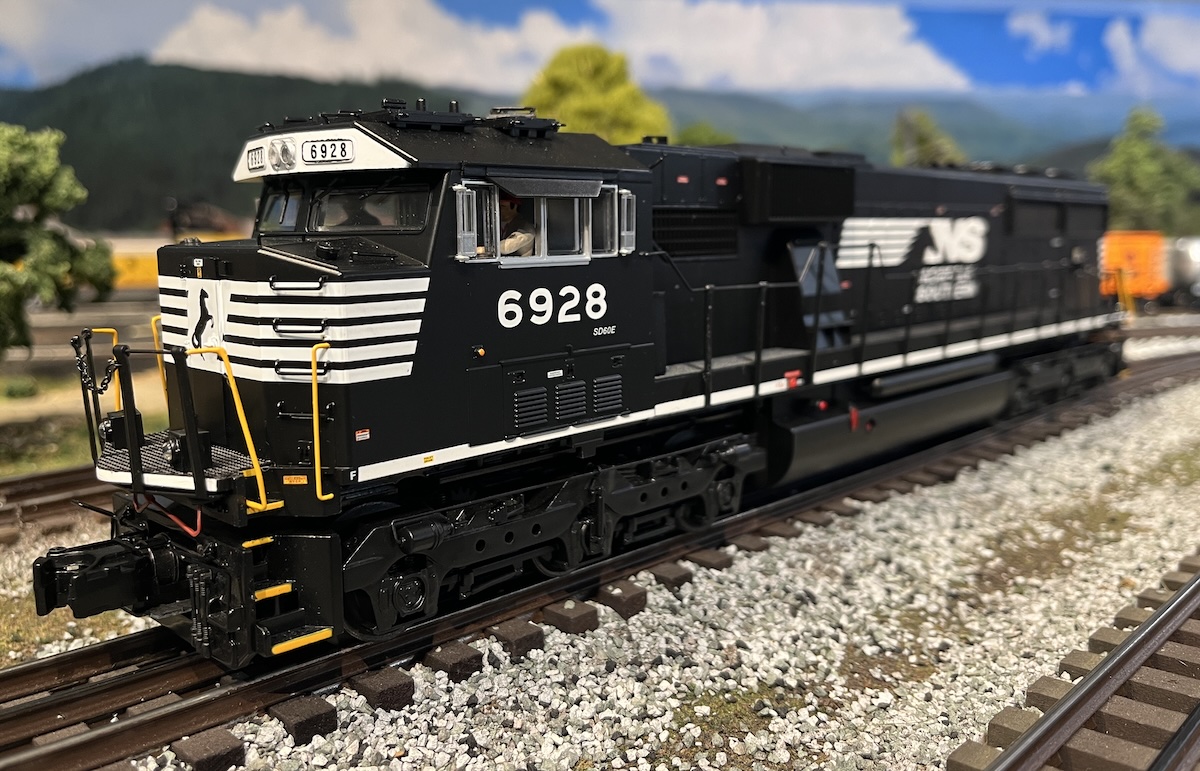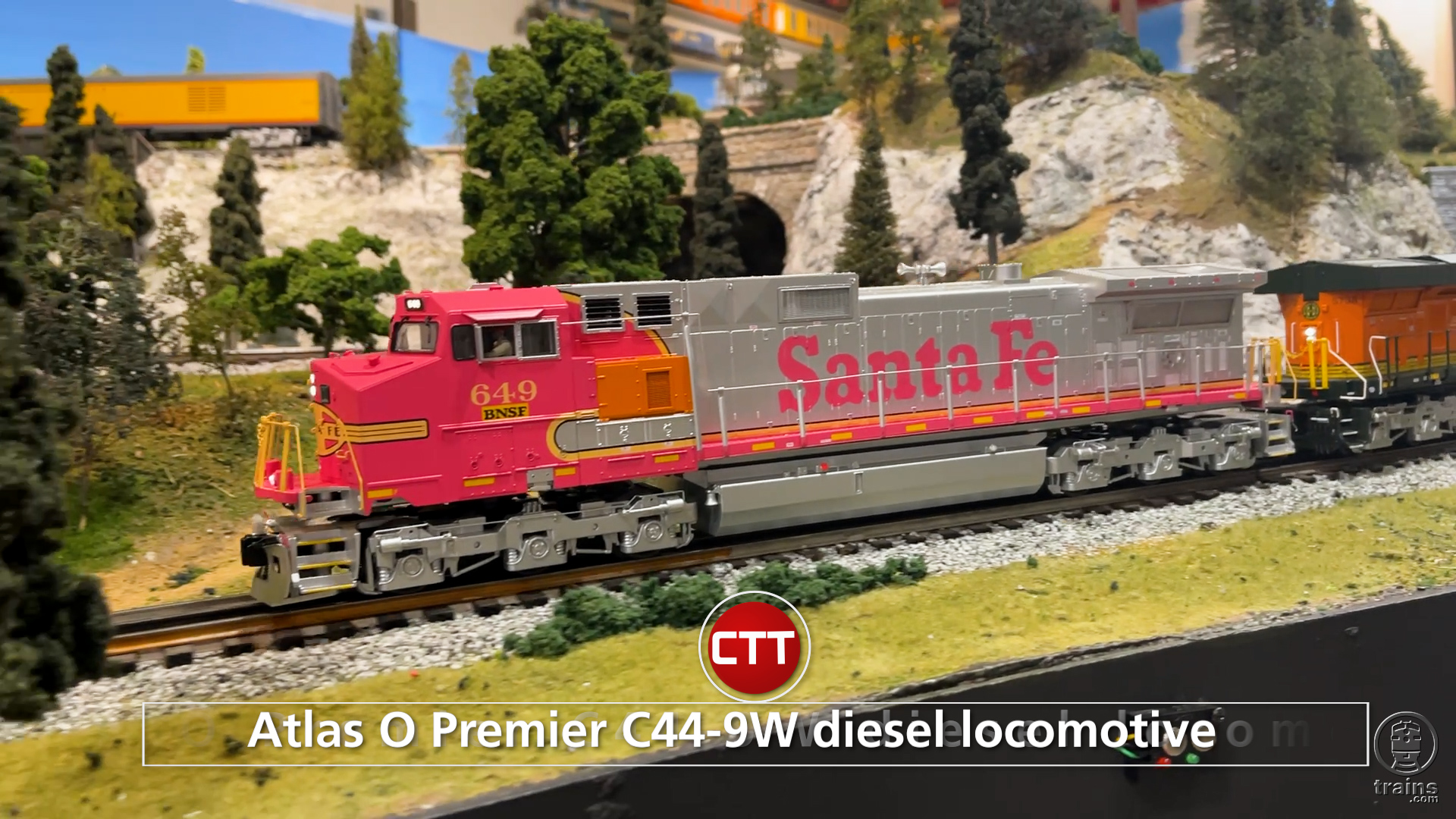An observer noted, “They never got the standardization concept like GM did. From a production point of view, they tended to approach every diesel as a custom job.”
In the world of mass-produced, diesel-powered railroading, that just wasn’t good enough.
Still, Baldwin did produce some memorable diesels, such as the “sharknose” RF 16, the many-wheeled Centipedes, and the VO 1000 switchers.
Baldwin built 548 of the 1,000-horsepower VO 1000s between 1939 and 1946. Thirty of them were built for the Chicago, Burlington & Quincy. By all accounts these locomotives did a good job for the Burlington Route.
Over time, the appearance of the Burlington switchers changed slightly. Wagon-wheel antennas were installed in the 1950s, and extended smokestacks were added to keep exhaust fumes away from the crew in the cab.
After 20 years of service, the Burlington traded in its Baldwins to GE for new locomotives. That wasn’t the end of their story, however. GE sold several of the veteran switchers to the Atlantic Coast Line, where at least a few operated until the late 1970s. Today, an on-line database lists 20 VO 1000s still in existence, although many of them may no longer be roadworthy.
The model
With a soft spot in my heart for underdog Baldwin diesels, I was eager to see how good a job Weaver would do with its long-awaited model of the VO 1000. I am pleased with the final result.
The model is well balanced and has a heft to it often absent on O gauge diesel locomotives.
The tooling is first rate, and the cast-in vents, doors, hinges, and latches are all crisp. Of special note is the large automotive-like grill and raised headlight at the end of the long hood.
Over the course of their service life, some of the CB&Q Baldwins were given exhaust-stack extensions. Weaver has included a set of tall stacks with the VO 1000 to swap out, if you so choose.
The VO 1000 cab requires special mention – it is superb. The cab is fully rigged and painted in what I dub “EMD institutional green.” It also features a crew figure.
The model measures 50 feet coupler to coupler in O scale (121/2 inches), pretty much on target with the prototype’s 48 feet, 10 inches.
Painting and decoration of the model are fantastic. The Burlington Route colors and striping are superb — we noted no blemishes. Accent striping is sharp, especially the diagonal white safety stripes on each side of the locomotive and the thin yellow and red lines running along the upper edge of the frame. One side of the locomotive wears the Burlington’s slogan “Way of the Zephyrs” and the other side states “Everywhere West.”
In addition to Burlington, the Weaver model is available undecorated and decorated in Baltimore & Ohio, Great Northern, Jersey Central, Lehigh Valley, Milwaukee Road, New York Central, Pennsylvania, Reading, Santa Fe, Union Pacific, and Western Maryland road names.
On the test track
Our test locomotive included Lionel’s TrainMaster Command Control and RailSounds and featured coil-operated couplers on each end.
In conventional-control mode, our sample locomotive recorded a low-speed average of 10.3 scale mph and a high-speed average of 132.5 scale mph. In command-control mode, we were able to bring that low-speed average down to 6.7 scale mph. Drawbar pull for the 3-pound, 11-ounce locomotive was 1 pound, 8 ounces, plenty enough to handle a reasonable-length train.
The locomotive ran fine at higher speeds by itself and when pulling a train. But at low speeds with the Lionel RailSounds turned off, I occasionally could hear a faint rubbing sound as the VO 1000 rounded curves. I popped off the shell to see if something was rubbing inside but found no problem.
CTT staff members ran the VO 1000 in conventional-control and command-control modes on three home layouts. At higher speeds pulling a moderately heavy train (13 postwar cars), our sample VO 1000 performed just fine.
But at low speeds on two of the layouts, our sample locomotive periodically bogged down. This was especially noticeable in TrainMaster Command Control mode, where it was all too easy to overcompensate using the CAB-1 dial.
Performance was better when we used an MTH DCS controller to send signals to the VO 1000, since the notches on the DCS thumbwheel helped keep throttle overcompensation in check.
After putting our heads together, we suspect all of this was a combination of the locomotive’s gearing and the weight of the train we were pulling. A second peek under the shell didn’t reveal any obvious problems.
Speaking of the shell, it was a dickens to get off. After removing the screws, I expected it to slip off. But the cab is held in place by two tabs that must be pushed back to disengage.
Lionel does not offer Baldwin locomotive sounds to its RailSounds licensees (Weaver, Atlas O, K-Line, and 3rd Rail). The locomotive comes instead with EMD sounds. Personally, I’m just tickled to see the VO 1000 being offered at all, so the incorrect sound package doesn’t bother me, although it may irritate others.
The horn and bell sounds were clear and appropriate for a first-generation switcher. However, I noted a bit of distortion when listening to the prime-mover sounds through the locomotive’s speaker.
The RailSounds on/off and TMCC run/program switches are on the underside of the frame. There are no provisions for a RailSounds backup 9-volt battery when operating in conventional- control mode, so locomotive sounds will cut in and out as you cycle between forward, neutral, and reverse.
As a whole, the Weaver VO 1000 is a distinctive locomotive with an especially detailed cab. It’s an underdog that stands out nicely amid a sea of existing O gauge EMD and Alco switchers.





